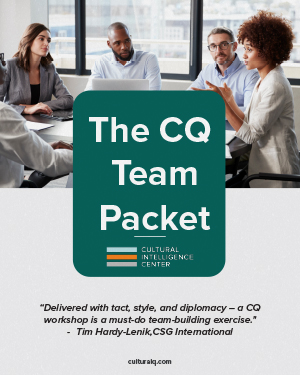What is Cultural Intelligence?
Cultural Intelligence (CQ®) is your competitive edge in a world full of different perspectives. It’s the ability to work effectively with people who think, communicate, and lead differently–across teams, industries, cultures, generations, and perspectives.
Every day, we interact with people who see the world differently than we do. These differences–whether in age, background, profession, nationality, or other factors–can either lead to misunderstandings or become a source of strength.
Cultural Intelligence is What Can Tip the Scales.
Why CQ® Works
Many approaches focus on cultural awareness, but awareness alone doesn’t drive results.
CQ® is different because it’s:
A proven framework
Backed by research across 100+ countries and 200,000 individuals.
A measurable skill
Unlike general sensitivity training, CQ® provides actionable strategies you can develop and improve.
Applicable to any setting
From leadership and teamwork to negotiations and decision-making, CQ® helps you succeed in any environment.
What is the Science Behind CQ®?
The Cultural Intelligence Center is the only organization whose CQ® Assessment has been rigorously validated and cited in over 1,000 research studies. Our research doesn’t just inform the field—it defines it. That’s why over 1,000 academic and industry studies cite our CQ® model.
Research spanning 100+ countries and 200,000 individuals has shown that CQ® predicts:
Why CQ® Matters
Many people struggle to lead, collaborate, or communicate across differences–not because they lack effort, but because they lack a strategy. That’s where CQ® comes in. It’s the roadmap for turning cultural complexity into your team’s greatest strength.

Research shows that individuals and organizations with high CQ®:
- Lead more effectively by adapting their approach to different audiences.
- Reduce conflict and improve decision-making by understanding different perspectives.
- Drive innovation by tapping into diverse ideas and problem-solving styles.
- Build stronger teams by creating an environment where everyone feels valued and heard.
CQ® isn't just important–it's essential for success in today's world.
Take the first step toward better collaboration, stronger leadership, and real results. Download your free sample assessment report.
Download Your Free Resources


